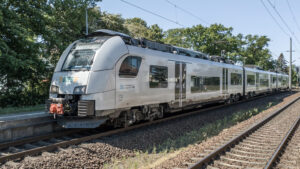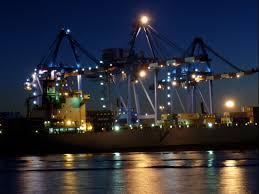Rajni Patwardhan, Head of Marketing, Kale Logistics Solutions, reveals how Sea-Air Corridors are transforming logistics, combining speed, flexibility, and sustainability to future-proof global trade in an increasingly unpredictable world.

Sea-Air Corridors blend speed and savings for smarter global logistics solutions
Reimagining cargo movement
Today’s cargo travels across the globe by sea, air, road, and rail, with ships handling over 80 percent of global trade. From automobiles and machinery to even perishables, the maritime route dominates, offering volume efficiency. Air cargo, on the other hand, has long been the go-to for specialised goods needing extra care and swift delivery.
But times are changing. With rising global demand for faster, smarter deliveries, the lines between transport modes are blurring. Integration between sea and air is no longer a concept; it’s becoming a necessity. This seamless shift from ship to plane, and sometimes even via road or rail, is ushering in a new era in logistics.
Introducing sea-air corridor
Think of the Sea-Air Corridor as a fast lane in global logistics, one that fuses the reach of maritime with the speed of air transport. It’s not just a connection; it’s a synergy. This corridor creates a streamlined, intelligent platform for cargo to flow effortlessly across modes, supported by real-time data sharing and coordination among stakeholders at both ends. It’s smarter, quicker, and definitely more agile.
Why this shift matters?
The surge in globalisation led to offshore production and the movement of high-value goods across vast distances. Containerisation revolutionised shipping, making maritime transport faster and more flexible. This progress allowed sea freight to stand toe-to-toe with air cargo.
But it’s not about rivalry; it’s about collaboration. When ports and airports complement each other within a unified system, logistics teams gain valuable tools: choice, speed, backup options, and control. The integration of sea and air creates new distribution possibilities, accommodating diverse delivery needs in a volatile trade environment.
Overcoming uncertainties
In a world of embargoes, sanctions, and geopolitical tremors, the Sea-Air Corridor offers a lifeline. It empowers logistics managers to pivot quickly, rerouting shipments through neutral hubs, bypassing trouble zones, and ensuring uninterrupted access to key markets. This kind of built-in flexibility is not a luxury anymore; it’s a lifeline for global supply chains.
The future of logistics?
The future of logistics hinges on connectivity, and the Sea-Air Corridor is leading the charge. It brings together the low-cost advantage of shipping and the speed of flying, an ideal solution for high-value, time-sensitive goods.
With digital tracking, smarter customs processes, and the ability to avoid bottlenecks, this hybrid model is reshaping how global trade functions. Add to that the environmental edge, optimising for both cost and carbon, and you get a strategy that’s not just efficient but also sustainable.
The Sea-Air Corridor isn’t just a trend. It’s the logistics playbook for a faster, smarter, and more resilient world.











